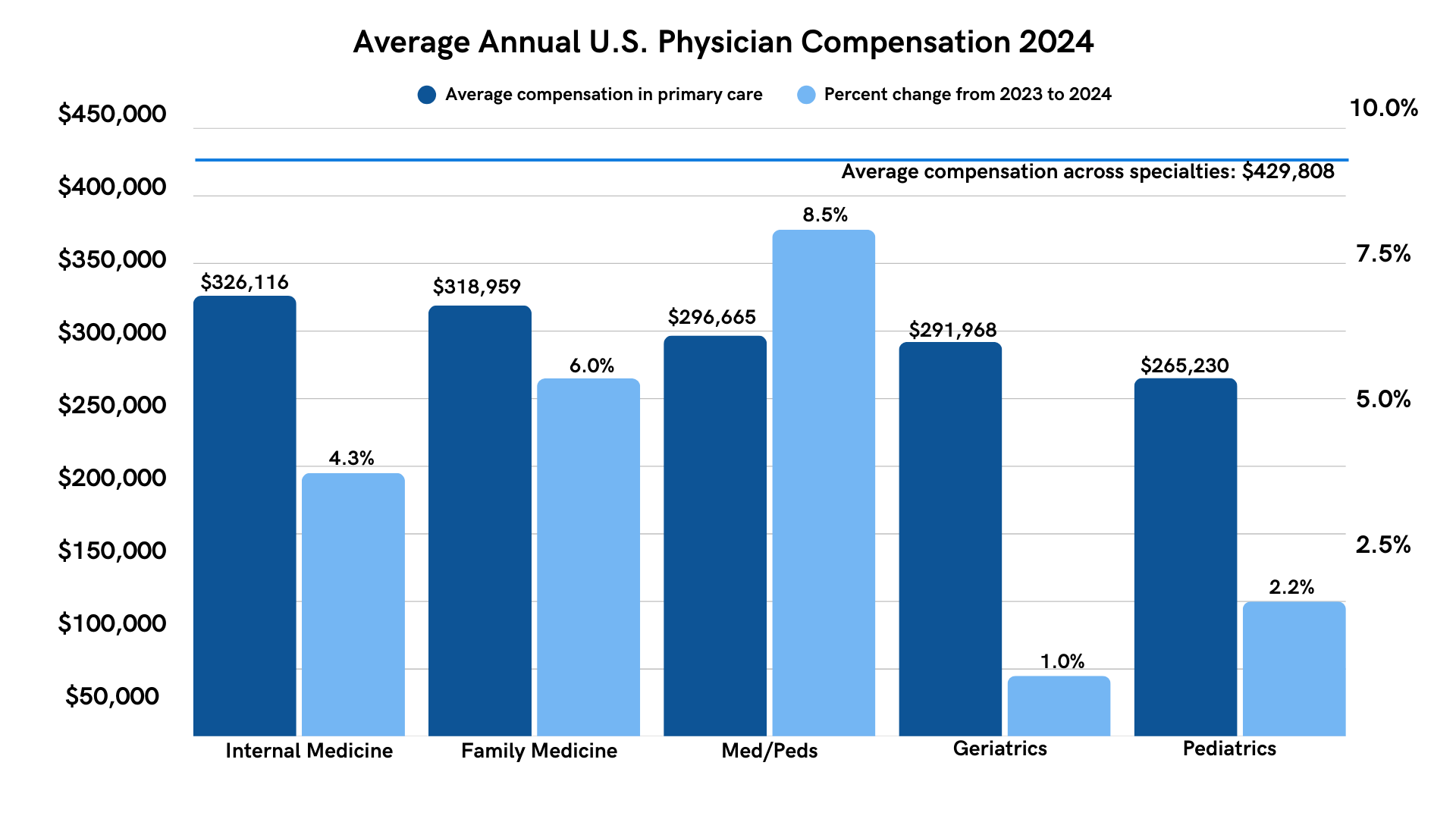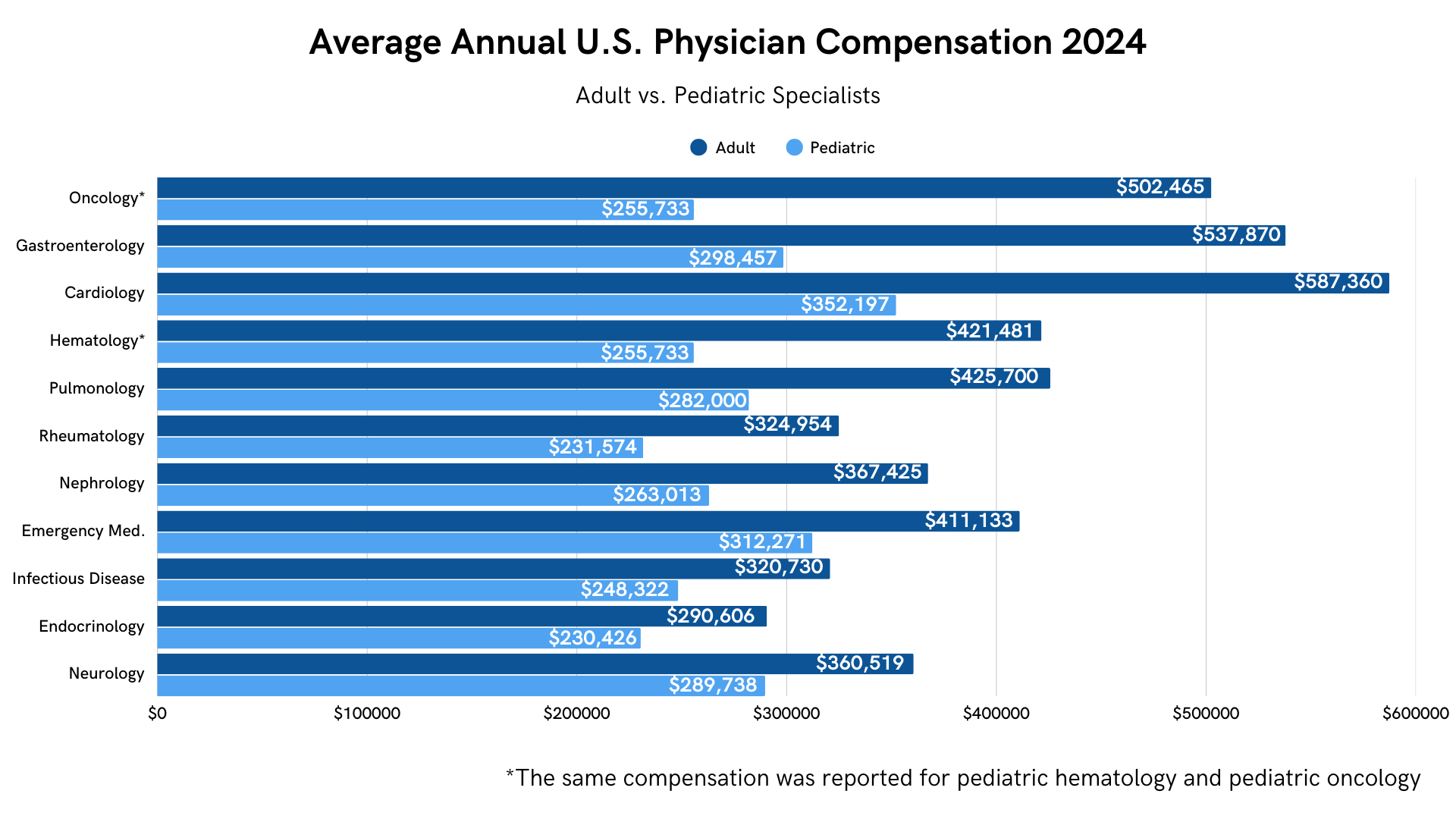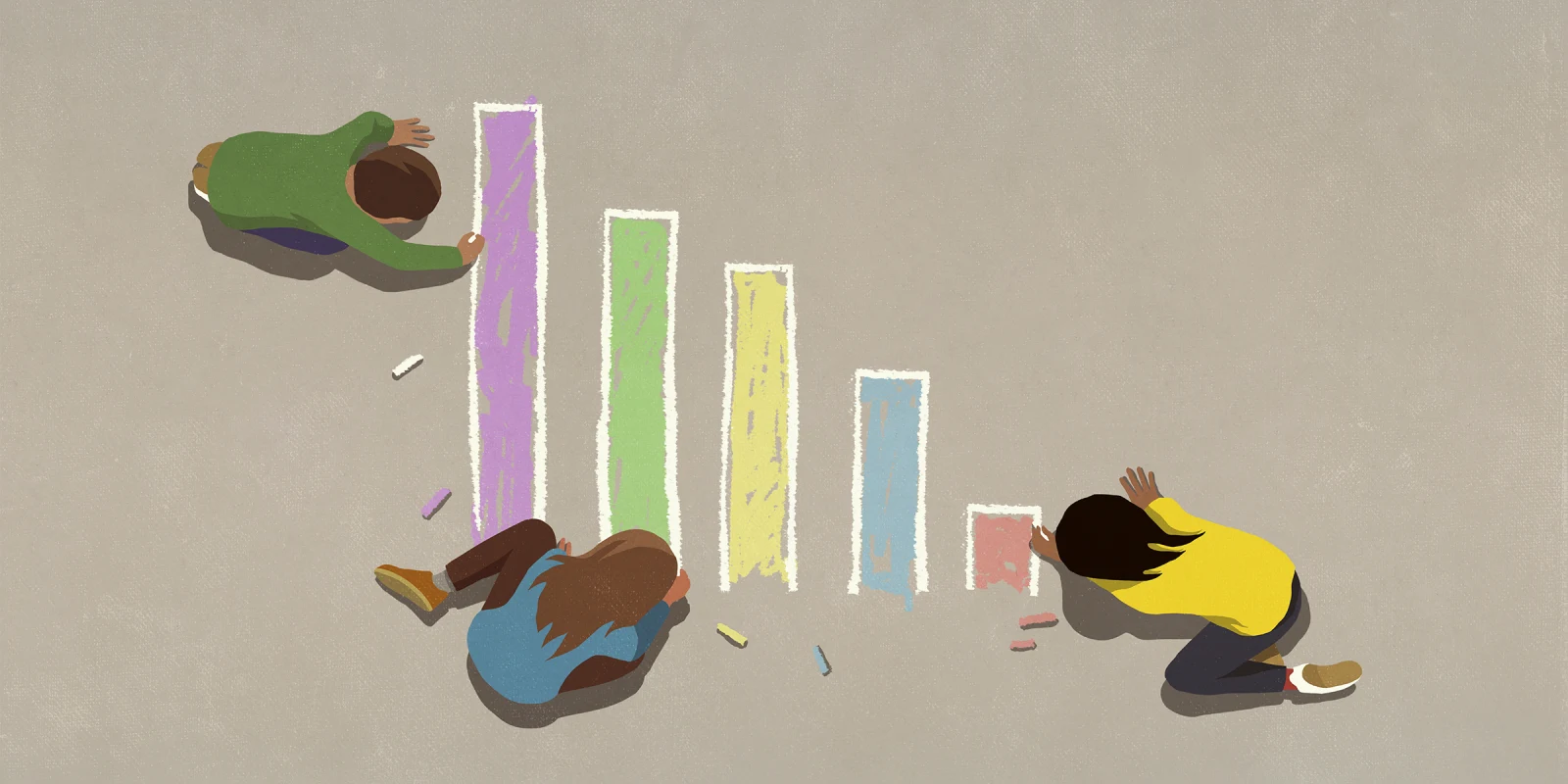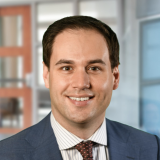Average compensation for pediatricians increased to $265,230 in 2024, up 2.2% from the prior year, according to Doximity’s 2025 Physician Compensation Report. In comparison, average compensation for all physicians rose 3.7% to $429,808.
After factoring in inflation, however, pediatricians’ real income and purchasing power has actually decreased by 6.7% since 2017. In effect, pediatricians made an average of $14,590 less in 2024 than in 2017, after adjusting for inflation per the U.S. Bureau of Labor Statistics’ Consumer Price Index (CPI). The compensation report is based on surveys of more than 230,000 full-time, practicing U.S. physicians, including roughly 37,000 surveys completed in 2024.

Pediatricians received the lowest annual compensation across primary care specialties. Family medicine physicians, for example, earned $318,959 on average in 2024, compared with $265,230 for pediatricians — a roughly 18% difference. Pediatrics also saw one of the lowest growth rates in pay (2.2%) from the prior year across all medical specialties.
“This relatively lower compensation is deeply concerning to those of us who care for children,” Susan J. Kressly, MD, 2025 president of the American Academy of Pediatrics, told Doximity. “With rising medical debt and new caps on graduate education loans, the lifetime earnings of a pediatrician make it financially unfeasible for many who would otherwise choose this profession.”
Pediatric Pay Gap
These findings add to long-standing concerns over insufficient pay for pediatric care. Indeed, in a June 2025 survey of more than 1,200 pediatricians, the vast majority (87%) said they are not fairly compensated relative to the complexity and importance of their work.
What’s more, the pay gap between pediatric and adult care remained significant in 2024. Pediatric subspecialists within the same field received at least 24% lower compensation than adult subspecialists, despite having similar levels of training and responsibility.

The pay gap was widest in oncology, where compensation was on average 96% higher for adult specialists than for pediatric specialists. And the difference was nearly as wide in gastroenterology (80% higher pay for adult specialists), followed by cardiology (67%), hematology (65%), and pulmonology (51%).
In contrast, endocrinologists made 26% more than pediatric endocrinologists in 2024, compared with 34% more in 2023. Nephrology similarly saw a decrease in pay gap to 40% in 2024, from 61% in 2023. These shifts come amid the rising prevalence of childhood obesity and chronic kidney disease, as well as the surging popularity of GLP-1s for adolescents.
Overall, the ongoing disparities between adult and pediatric specialists capture a widespread lag in pay that has the potential to shape clinical practice and access to care. While there are many forces driving this pay gap, Dr. Kressly underscored several key contributors.
One of the most apparent factors is that Medicaid and the Children’s Health Insurance Program (CHIP), which together cover about half of the nation’s children, pay a fraction of Medicare rates — at times, not even covering the cost of care delivery.
“This under-compensation poses challenges for sustaining high-quality pediatric care,” Dr. Kressly said. “The economics of a higher percentage of patients being insured by the lowest paid insurance leaves pediatric clinicians at a huge disadvantage.”
Another reason is that pediatric care heavily emphasizes prevention, early screening, and wellness. The focus is on keeping children healthy while minimizing interventions. This goal runs counter to the way existing insurance payment processes aim to maximize profits.
“The insurance industry was never built to promote ‘wellness,’” Dr. Kressly said. “In the current system, many of the codes pediatricians use aren’t even on the Medicare fee schedule. Attention is paid to the big impact items. Pediatrics consumes the least amount of monetary resources, so it is often ignored.”
She added that this dynamic reflects a paradox: “The return on investment for high-quality pediatric care is extraordinarily high, benefiting children, families, and society at large — yet it remains undervalued and undercompensated.”
‘Where I Belong’
The June 2025 survey of pediatricians and pediatric specialists also underscored a shortfall in current reimbursement levels for their work.
Approximately 87% of the surveyed physicians said that current reimbursement levels do not adequately align with the needs and complexity of today’s pediatric patient population. And 91% said they are concerned that reimbursement levels are interfering with early intervention and prevention efforts for pediatric patients.
These financial limitations have pushed 65% of the pediatricians and pediatric subspecialists to make moderate or significant changes to their practice model, such as increasing patient volume and cutting down on staff.
Beyond systemic consequences, the lower compensation for pediatric care compared with adult care has negatively affected physicians on a personal level as well. Among physicians surveyed, 87% said that the relatively lower compensation has affected their ability to repay their educational debt, save for retirement, or meet other financial goals. And 69% said that the relatively lower pay has led them to consider making a career change, a third of whom already have or are now planning to do so.
And yet, despite these many challenges, most physicians in pediatric care appear to remain deeply committed to their work.
Nearly three-fourths (74%) of physicians surveyed said that they have a strong sense of purpose or mission in caring for children, which inspires them to remain dedicated to pediatric care. The same percentage of physicians (74%) said that they are inspired to stay in pediatric care because of their passion for their specialty or clinical focus.
“Almost every pediatric clinician I meet will tell me that in some way they were called to serve children and families,” Dr. Kressly said. “Some experience in our training either captured our heart or confirmed what we knew: this is where I belong; this fills my cup; these are my people and where I am seen, heard, and valued.”
Image by Malte Mueller / Getty Images







